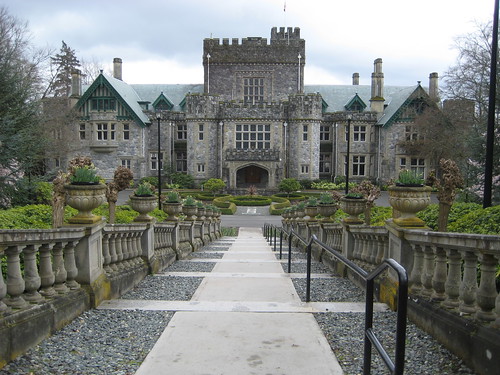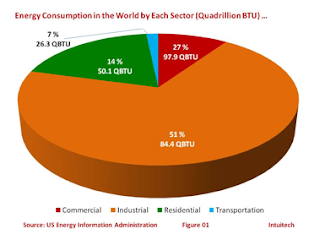New Trends: Smaller, Affordable, and Energy-Efficient Houses
By Mir F. Ali
Here’s another guest post from Mir Ali about the current trend in home construction. If one takes the idea of net-zero emissions and smaller construction and pushes it further, maybe we could all become producers of power through waste management processes and through solar panels…maybe our exercise bikes could be plugged in to the grid….ok that’s a joke, but the concept of each one of our homes somehow being producers and not drainers would be well worth pursuing for government. I am sure there is a rats nest of politics and business in there somewhere. I am also completely onside with the desire for smaller and more efficient homes..after cutting my lawn and gardening and cleaning the house all last weekend, smaller has a great appeal.
Thanks for the article Mir.
New Trends: Smaller, Affordable, and Energy-Efficient Houses
Dr. Mir F. Ali, Sustainability Analyst
The global economic downturn is a mixed blessing for home buyers — if you’re lucky enough to hang on to your job, you should be in a much better position to buy a house, according to a report released by RBC Economics. The question is: What kind of house?
Experts from the NAHB and Better Homes & Gardens Magazine released some interesting research recently at the International Builder’s Show in Las Vegas. They found that Americans aren’t interested in McMansions or large homes anymore; they’re looking for something more practical. They’re looking for economic and cozy spaces with neat organization.
Here is how America is responding to the new housing trends …
“Buyers right now are focused on an affordable monthly mortgage payment, low utility bills and a home that fits their lifestyle while maximizing every square foot,” says Kent Goff, vice president of planning and design for Beazer Homes. “They want all the rooms and every bit of space in the home to work for them — and without sacrificing luxury.” The “less is more” idea has some builders scaling down the size of their homes. Beazer, for instance, found that by eliminating walls and underused hallways, it can use every square foot in the home more efficiently and “design homes that may be smaller, but feel just as big,” Goff says.
A recent study of 2,300 homeowners by the National Association of Home Builders found that more than 50 percent of those surveyed said they would pay $5,000 to $11,000 more up front for a new house if they could save on their utility bills. Other trends worth watching include:
- smarter storage;
- cleaner air;
- built-in flexibility;
- and uncompromised kitchen;
- etc.
According to the surveys, consumers today want:
- “Wii-sized,” media-centric family gathering rooms;
- More storage to keep clutter under control;
- Small homes with built in shelves for food storage;
- Energy-efficient homes with lower utility bills;
- Outdoor spaces, such as a front porch;
- and a dedicated home office space.
This is in direct contrast to the notion of room count, which Cheryl O’Brien (President and Chief Designer of C. O’Brian Architects in Bala Cynwyd, PA) describes as “houses with 2,000 to 2,200 square feet having a living room, dining room, kitchen, breakfast nook and family room where none of the rooms functioned well.” Instead she prefers what she calls “sensible design: floor plans with a nice-sized kitchen; one gathering space for eating; a great room; and a flex room that can be used as a home office, a play room, an in-law suite, a formal dining room, or whatever function best fits the family’s needs.” ?
One reason for the shift away from several separate rooms, O’Brien says, are young buyers who don’t want and can’t afford to furnish all those rooms. “For people who are 30 years old, starting their families or single, I don’t think the Ethan Allen dining room set is on their list of dreams,” she says. “It’s the big-screen TV or the laptop - the technology. The design of the house needs to reflect what those people really want.” ??Carlos Bazbaz, president of Houston-based Lanterra Homes, sells to those buyers. The biggest battle his company faced when it designed affordable, starter patio homes for first-time buyers was convincing them that 1,300 square feet was big enough to meet their needs. He did it by essentially making the public spaces of the house - the first floor - a kitchen and a flexible dining and living space. “It’s good for entertaining, which is good for the younger crowd that is our market,” he says. “There’s lots of natural light and we have 9-foot ceilings on the first floor. That provides an open and large feel.” ?
Here is how Canada is responding to the new housing trends …
According to a recent report, Infrastructure Investment in Affordable Housing as Economic Stimulus, construction investment represents approximately 12% of Canada’s annual GDP. More than one million Canadians earn a living in the construction industry. Each new home built creates an estimated four to six person years of direct and indirect employment for Canadian workers. Housing development, maintenance and updating are one of the country’s main economic engines and provide jobs for years to come. The other findings of the report include:
- On average, households spend roughly one-fifth of their income on shelter and related expenses. By investing in affordable housing, renters’ income contributes to Canada’s public infrastructure;
- Lumber production in Canada is highly dependent on demands in residential construction, thus investment in affordable housing across Canada will support jobs for Canadians in lumber production; and
- Available affordable housing will contribute significantly to local economies that would be able to attract and retain lower paid workers. This is particularly critical in high growth centres where labour shortages impact the well-being of these cities, which are widely acknowledged as the engines of national economic growth, competitiveness and productivity. High or rising housing costs are a deterrent to labour mobility, reducing labour supply and putting pressure on wage rates.
A visionary real estate developer, Les Bjola, is making history in Canada by launching Kettle Creek Station, in the City of Langford, British Columbia, to build up to 500 smaller, affordable, and efficient houses. Kettle Creek Station is an example of what can be done to better utilize land, create more affordable home ownership options, benefiting the community with local job creation.
The homes at Kettle Creek Station were originally planned to be high quality modular homes created off-site in Oregon. As the economy slowed many factors were taken into consideration, the developer decided to construct those homes on site with local labour and materials which is turning out to be another way of stimulating the local economy. They are getting local companies involved in the build out of Kettle Creek Station, offering approximately 50 jobs this spring and further jobs this summer.
As far as the energy-efficient houses are concerned, the government of British Columbia issued a Request for Proposal (RFP) to assist construction of homes and buildings that seek to achieve net zero or near-net zero energy performance. Net zero homes use super efficient design to minimize the need for energy, combined with clean energy supplies on-site or in the community. Passive design, including superior building envelope construction and passive solar gain through building orientation, is the primary design concept being encouraged on the path to net zero homes. Other design considerations will be the use of clean community energy sources and on-site clean power, heating and cooling supplies that supply as much energy over a year as purchased from utilities.
This program has a total budget of one million to construct a total of 100 super-efficient residential units and an educational building by March 31, 2012 in both coastal and interior regions of British Columbia. This budget is designed for assisting to make houses net-zero-energy-efficient not to construct them. Each project is expected to build five marketable, and net-zero-energy efficient homes with smaller-than average overall floor space. The marketability is the key to this program as being smaller and energy-efficient is not good enough — these houses have to be affordable.
It is important to understand that certain levels of energy-efficiency can be achieved with the passive design, but a net-zero emission building is characterized according to the government of British Columbia by significant reductions in fossil fuel use, with the remaining net energy needs met from community based or on-site, renewable and waste energy resources. In order to get to net-zero energy, new houses and buildings could either incorporate on-site. Net-zero energy supplies or meet their energy needs from clean energy sources.
There are several tools available in the market to help bridge the gap between the energy-efficiency achieved through the passive design and the desirable level of energy-efficiency to build affordable net-zero efficient houses. For instance, Terasen Energy Services builds, owns, and operates innovative geoexchange systems, community piping, and energy transfer systems to harness renewable energy sources. Their geoexchange ground source heat pumps (GSHP) use the solar heat stored in the Earth, just below the frost line or in a body of water, to heat or cool buildings. In colder months, heat pumps draw heat from the ground to warm buildings, while in warmer months, the systems use the cooler ground as a “heat sink” to cool buildings. The chief benefit of geoexchange is the high level of system efficiency, which is typically measured as a Coefficient of Performance (CoP). The CoP of a heat pump is the ratio of the output heat to the energy input. For a CoP of 3.5, it means that for every kilowatt of electricity needed to operate the system, the heat pump provides 3.5 kilowatts of heat energy. The CoP often ranges from 3.0 – 4.0, which translates to lower operating costs when compared to conventional systems.
While it takes time to change the human behaviour to accept the reality, Canadians seem to have started the process of recognizing the reality that the current economical conditions are not going to go away in a hurry and they must treat it as an opportunity for making intelligent decisions. The change in the attitude appears to be a testimony to the fact that Kettle Creek Station started selling their houses before even they finished building their show homes. The important thing is that the trends have been started and there is no doubt in anybody’s mind that smart Canadian developers will follow the success of Kettle Creek Station to build smaller, affordable, and energy-efficient houses all over the map, utilizing tools and techniques available to maximize the energy-efficiency without compromising the quality of life. This approach not only will change the landscape of Canadian communities and cities but it will also help reduce greenhouse gas emissions drastically.


Comments